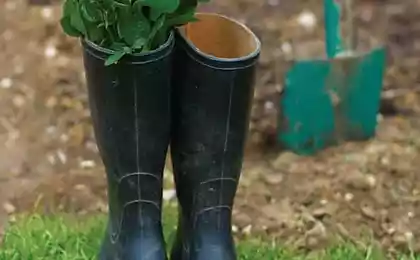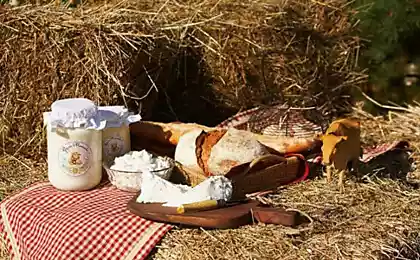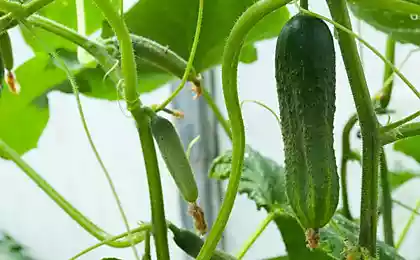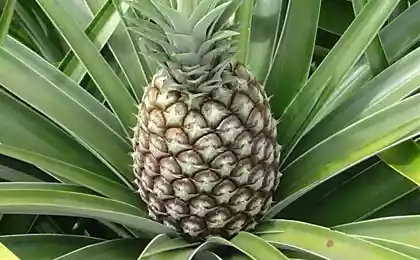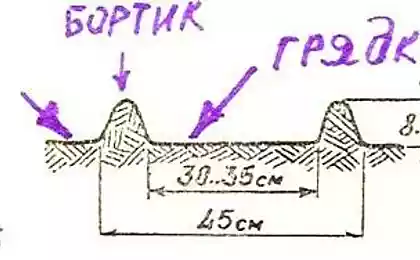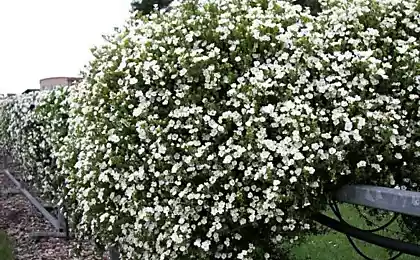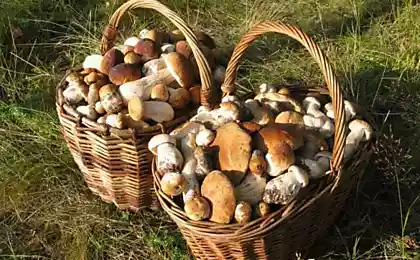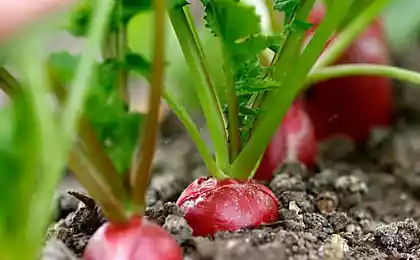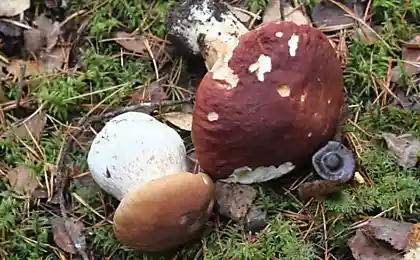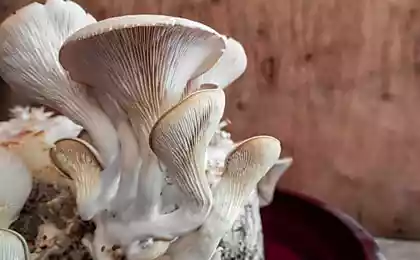460
How to grow ginseng at home
Some centuries ago people began to think about how to cultivate. The first attempts of cultivation of ginseng has been taken in the far East. Currently, the root of life is cultivated even in the middle of Russia. The success of growing ginseng in the middle zone of Russia is primarily determined by the creation of the necessary climate and light shading.
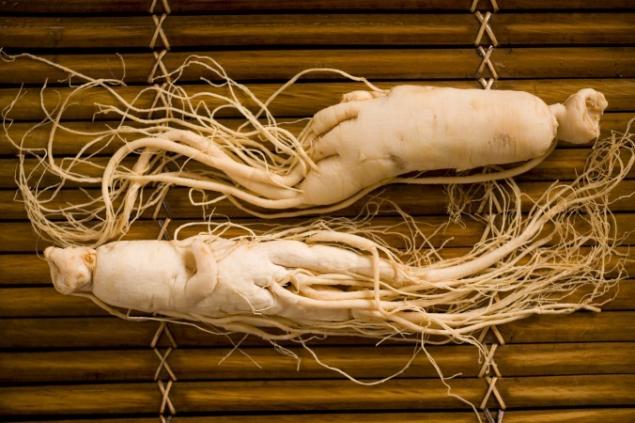
It should be noted that at the sharp fluctuations of humidity, the plant gets sick and may even die, so the humidity should be maintained between 70-80%. To achieve this, the beds with ginseng is placed in between the trees, and around them lay the chips, which in a dry time watering several times a day.
The soil for growing ginseng.
To grow ginseng using the soil of the following composition: 2 parts of loose earth, 1 part leaf compost, 1/2 part charcoal dust and 1/2 part coarse sand. For each bucket of mix add 2 tablespoons of wood ash. In the above composition, you can add rotted manure compost (5-6 kg per 1 m2) or orthopedagogy compost. To cook leafy humus, fallen leaves in autumn, collect in a heap, abundantly watered, and periodically stirred to accelerate the process of decomposition. Three times over the summer in humus enriched with added trace elements fertilizer for indoor plants.
Deciduous humus, mixed with wood dust, is used as the main part of the topsoil for the laying of beds for ginseng.
Soil preparation for planting ginseng.
Beds for ginseng, of a width not exceeding 1.2 m, come from the East to the West. Throughout the area of the patch removed a layer of earth to a depth of 20 cm, then line the bottom, make the drainage (layer 5-7 cm) of river gravel or coarse sand and fill the beds of prepared soil mixture. The surface of the beds level. 10-14 days after filling the beds with potting compost carry out preventive disinfection of the soil with a solution of 40% formalin in the ratio 1:100 (1 liter of 40% formalin 100 l of water). The flow rate of the solution should not exceed 8 liters per 1 m2 of the ground. Tillage is carried out from regular watering.
Planting ginseng.
Ginseng reproduces only by seed. The latter can be purchased from the fans, or order the enterprises involved in cultivation of this plant. Seeds are harvested at full ripeness. To separate the seeds from the pulp, the fruits are mixed with moist, preheated sand, kept for 3-4 days, then washed, again mixed with sand and leave for 24 hours. Thereafter, the mixture was sifted through a sieve, the holes of which is slightly less than the seeds.
The thus prepared seeds again mixed with sand (1 part seed 3-4 parts sand), pour in a wooden box, cover it with a wooden lid and buried in the ground to a depth of 30-40 cm once a month the mixture is moistened.
In the above mode, the seeds kept for 1 year. Stratified seeds planted in late August. The following spring, they usually sprout.
Before sowing, seeds are disinfected for 15 minutes in a 0.5% strength solution of potassium permanganate, and then air in the shade for several hours.
For planting ginseng using the ordinary method. The rows are placed across the beds with a spacing of 10 cm, the Seeds are planted in rows at a distance of 5-7 cm from one another, closing up them into the soil to a depth of 5 cm.
Immediately after planting, watered the beds and mulch humus layer of 1-3 cm.
Care for sowing and planting ginseng.
Before the onset of cold weather beds, which are planted ginseng seeds, covered with fallen leaves with a layer of 10 cm of mulch or peat layer 2-4 cm
In the spring, about a week before the appearance of the first shoots, the insulated layer is removed, and over the beds set sun shades, which use wooden boards with 2-inch openings. Shields made of boards with a length of 150-170, width 12-15 thickness of 1-1,5 cm Care sprouts means regular weeding, loosening the soil and moistening the soil. 10 days after germination carry out preventive treatment of plants with 0.01% solution of potassium permanganate (2 l per 1 m2). After a week of doing the second treatment of 0.3% potassium permanganate solution (1 l per 1 m2), and a month later the plants are sprayed again (1 liter of 0.5% solution of potassium permanganate per 1 m2 landings).
Transplant seedlings of ginseng carried out at the beginning of October, after the drying aerial parts of the plant. Dug roots put in an enamel container, the bottom of which is lined with a damp cloth or moss. Top the roots, cover with a damp cloth. To start transplanting the same day. First, the roots are incubated for 3-5 minutes in 0.5% strength solution of potassium permanganate, then washed clean with cold water and dried in shade for 15 minutes.
The prepared roots are planted with a slight inclination to the grooves. The distance between grooves should not be less than 40, and between plants of 20 cm
Depth of planting ginseng should be such that the overwintering Bud was at a distance of 4-5 cm from the soil surface. After planting furrows with more potting compost, lightly compacted, watered and cover with a 2-cm layer of leaf humus. After the onset of cold weather insulated landing, usually 7-10 cm layer of sawdust. In late may, the plants sprout. Further care ginseng is periodic watering, weeding and loosening the soil, as well as an annual prophylactic treatment of the plants with a solution of potassium permanganate.
Source: best-travnik.ru

It should be noted that at the sharp fluctuations of humidity, the plant gets sick and may even die, so the humidity should be maintained between 70-80%. To achieve this, the beds with ginseng is placed in between the trees, and around them lay the chips, which in a dry time watering several times a day.
The soil for growing ginseng.
To grow ginseng using the soil of the following composition: 2 parts of loose earth, 1 part leaf compost, 1/2 part charcoal dust and 1/2 part coarse sand. For each bucket of mix add 2 tablespoons of wood ash. In the above composition, you can add rotted manure compost (5-6 kg per 1 m2) or orthopedagogy compost. To cook leafy humus, fallen leaves in autumn, collect in a heap, abundantly watered, and periodically stirred to accelerate the process of decomposition. Three times over the summer in humus enriched with added trace elements fertilizer for indoor plants.
Deciduous humus, mixed with wood dust, is used as the main part of the topsoil for the laying of beds for ginseng.
Soil preparation for planting ginseng.
Beds for ginseng, of a width not exceeding 1.2 m, come from the East to the West. Throughout the area of the patch removed a layer of earth to a depth of 20 cm, then line the bottom, make the drainage (layer 5-7 cm) of river gravel or coarse sand and fill the beds of prepared soil mixture. The surface of the beds level. 10-14 days after filling the beds with potting compost carry out preventive disinfection of the soil with a solution of 40% formalin in the ratio 1:100 (1 liter of 40% formalin 100 l of water). The flow rate of the solution should not exceed 8 liters per 1 m2 of the ground. Tillage is carried out from regular watering.
Planting ginseng.
Ginseng reproduces only by seed. The latter can be purchased from the fans, or order the enterprises involved in cultivation of this plant. Seeds are harvested at full ripeness. To separate the seeds from the pulp, the fruits are mixed with moist, preheated sand, kept for 3-4 days, then washed, again mixed with sand and leave for 24 hours. Thereafter, the mixture was sifted through a sieve, the holes of which is slightly less than the seeds.
The thus prepared seeds again mixed with sand (1 part seed 3-4 parts sand), pour in a wooden box, cover it with a wooden lid and buried in the ground to a depth of 30-40 cm once a month the mixture is moistened.
In the above mode, the seeds kept for 1 year. Stratified seeds planted in late August. The following spring, they usually sprout.
Before sowing, seeds are disinfected for 15 minutes in a 0.5% strength solution of potassium permanganate, and then air in the shade for several hours.
For planting ginseng using the ordinary method. The rows are placed across the beds with a spacing of 10 cm, the Seeds are planted in rows at a distance of 5-7 cm from one another, closing up them into the soil to a depth of 5 cm.
Immediately after planting, watered the beds and mulch humus layer of 1-3 cm.
Care for sowing and planting ginseng.
Before the onset of cold weather beds, which are planted ginseng seeds, covered with fallen leaves with a layer of 10 cm of mulch or peat layer 2-4 cm
In the spring, about a week before the appearance of the first shoots, the insulated layer is removed, and over the beds set sun shades, which use wooden boards with 2-inch openings. Shields made of boards with a length of 150-170, width 12-15 thickness of 1-1,5 cm Care sprouts means regular weeding, loosening the soil and moistening the soil. 10 days after germination carry out preventive treatment of plants with 0.01% solution of potassium permanganate (2 l per 1 m2). After a week of doing the second treatment of 0.3% potassium permanganate solution (1 l per 1 m2), and a month later the plants are sprayed again (1 liter of 0.5% solution of potassium permanganate per 1 m2 landings).
Transplant seedlings of ginseng carried out at the beginning of October, after the drying aerial parts of the plant. Dug roots put in an enamel container, the bottom of which is lined with a damp cloth or moss. Top the roots, cover with a damp cloth. To start transplanting the same day. First, the roots are incubated for 3-5 minutes in 0.5% strength solution of potassium permanganate, then washed clean with cold water and dried in shade for 15 minutes.
The prepared roots are planted with a slight inclination to the grooves. The distance between grooves should not be less than 40, and between plants of 20 cm
Depth of planting ginseng should be such that the overwintering Bud was at a distance of 4-5 cm from the soil surface. After planting furrows with more potting compost, lightly compacted, watered and cover with a 2-cm layer of leaf humus. After the onset of cold weather insulated landing, usually 7-10 cm layer of sawdust. In late may, the plants sprout. Further care ginseng is periodic watering, weeding and loosening the soil, as well as an annual prophylactic treatment of the plants with a solution of potassium permanganate.
Source: best-travnik.ru
Names of people who are perfect for their chosen profession
2014: The Most Expensive Cities in the World

